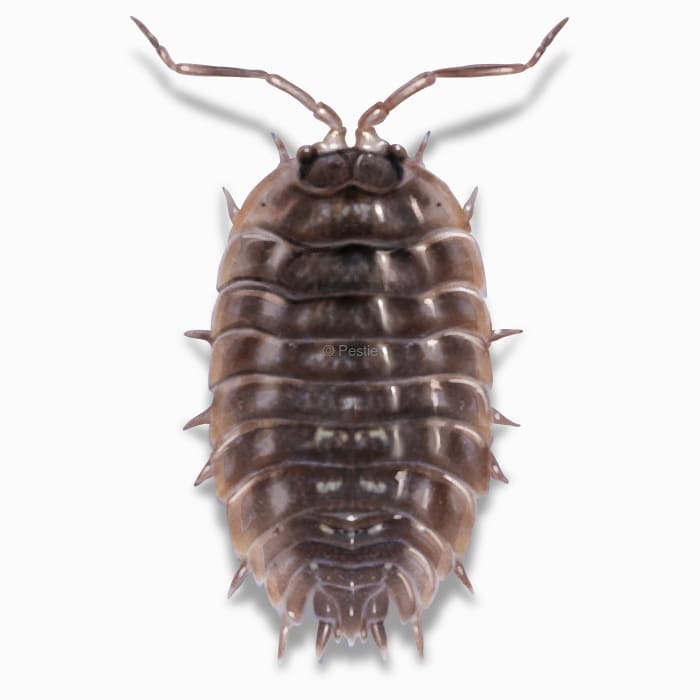How to identify and get rid of sowbugs

Sowbugs: the not-so-flexible isopod
What looks like a cross between a millipede and an armadillo but is closer related to lobsters than insects? Sowbugs!
Sowbugs are soil-dwelling crustaceans that feed on dead or decaying plants in your yard. Even though they mean no harm to us, they can often become a nuisance pest in our homes, garages, basements, or sheds. If there is moisture and decaying organic matter to chew on, you can bet that sowbugs will be there.
Sowbugs are the pillbug cousins that can't curl into a ball. While pillbugs get the cute name of roly-polies, sowbugs are content with their inflexible ways. They rely on their armored exoskeleton to protect them and scurry under rocks, logs, cinderblocks, flower pots, or anywhere cool and moist.
How to identify sowbugs
With their flat, segmented body and grey armored exoskeleton, Sowbugs are pretty easy to identify. They also have seven pairs of legs, two pairs of antennae, and two tail-like appendages from their backside.
One big way to tell the difference between a pillbug and a sowbug is that sowbugs can't roll into a ball for defense.
How big are sowbugs?
Sowbugs grow to be about half an inch to two-thirds of an inch long.
What other pest looks like a sowbug?
Pillbugs are the most similar pests; they look almost identical but have a more rounded body shape, and they can roll up into a ball when disturbed, which sowbugs cannot do.
Where do sowbugs live?
Sowbugs are found throughout the US. They prefer cool and moist areas near the soil, so you'll find them in gardens or underneath objects. You can sometimes spot them in garages, basements, or under kitchen sinks.
How to get rid of sowbugs
Sowbugs can sometimes become a problem in our homes or gardens, but they don't do a whole lot of damage to our plants or structures. If you find a lot of sowbugs in your garage, basement, or under a sink, it probably means you have a moisture problem first.
Since sowbugs are decomposers, they only occur after decaying plants or organic matter. They have to be in high moisture to survive, so they won't live very long if they accidentally make it inside your home.
Here are a few ways you can prevent or reduce sowbugs from coming inside:
- Reduce moisture by fixing leaks and using dehumidifiers.
- Clean up by removing leaf litter and debris around your home.
- Seal entry points to prevent them from coming indoors.
- Improve ventilation in damp areas of your home.
You can always vacuum or sweep up sowbugs if you find them in your home.
Check out Pestie's DIY pest control plan that gives you pro-grade solutions delivered to your door without spending a fortune.
Treat sowbugs with Pestie
If you're still having trouble keeping sowbugs away, the best option is to use a pro-grade, effective pest control solution like Pestie.
Pestie is a do-it-yourself pest control solution that's specially designed to keep sowbugs and other pests away from your home.
With Pestie, you can rest easy knowing that your living space is protected and free of creepy crawlies. And the best part? It's designed for people, pets, and the planet, so you can say goodbye to harsh chemicals and hello to peace of mind!
- Save hundreds compared to traditional annual pest plans
- People, pet, and planet-friendly
- Pro-grade customized formulas
Quick facts
- Scientific name
Suborder: Oniscidea
- Other common names
Woodlouses
- Colors
Grey
- Life span
2 years
- Diet
Decaying plant matter
How dangerous are Sowbugs?
Low danger risk
Sowbugs are not harmful to humans. They don't bite, spread diseases, or damage household structures.
Like marsupials, sowbug females have a pouch where they store their eggs and newly hatched offspring.








